 Facebook
Facebook
 X
X
 Instagram
Instagram
 TikTok
TikTok
 Youtube
Youtube
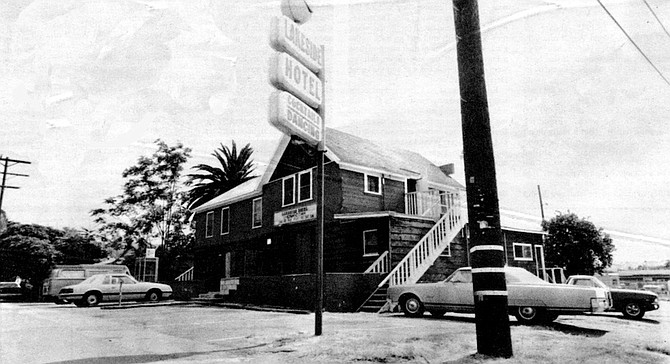
“The last real trouble he had was when bikers — predominately members of the Mongols, a particularly tough East County outfit — would frequent the hotel and often get into some pretty heavy, scary fights. For about a year, I guess from the middle of 1978 to the middle of ’79, we’d average a couple of fights a weekend. Then one day one of ’em just about snuffed another guy. That was all, and I eighty-sixed ’em.”
By Thomas K. Arnold, July 16, 1981 | Read full article
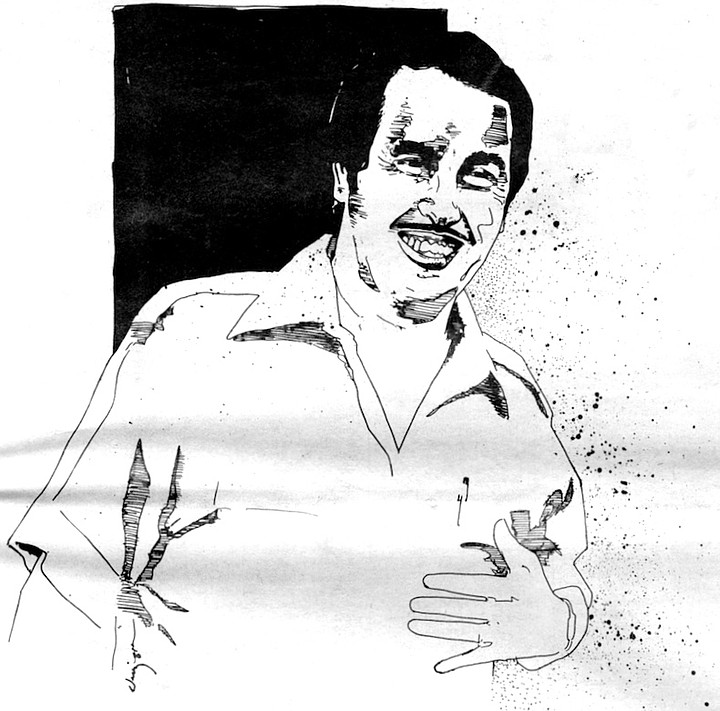
Fidel’s Norte opened with a bang in April of 1978. The Fidel’s name seemed magic. Mark and Richard were put in charge and Mark says their father opened the checkbook to them. They were making almost $700 a week, they bought a condominium overlooking the Del Mar racetrack, they both bought new cars — Mark a Porsche worth about $28,000. They also “started getting into new clothes — come to work in a new suit every day. We were in heaven.”
By Steven Shepherd, Oct. 1, 1981 | Read full article
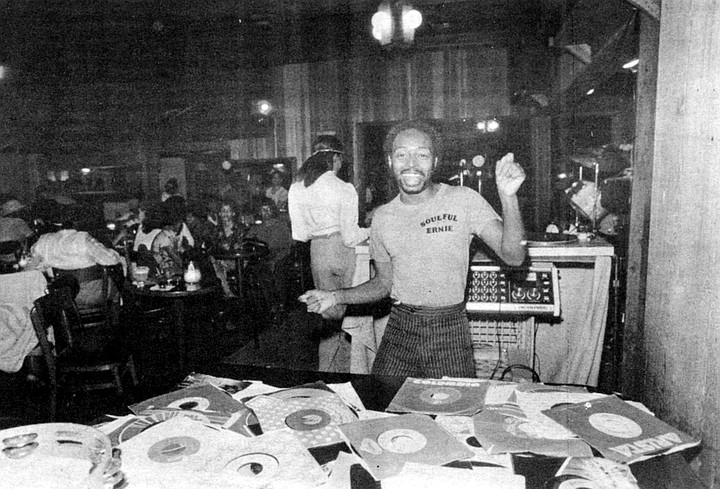
Wilson poured drinks for himself and Bradshaw, then sat next to him on the customers’ side of the bar. The gun was on the bartop in front of Bradshaw. Their conversation started quietly, but then, according to Bradshaw, Wilson started tapping the bartop with his hands, uttering insults, and finally pounced for the gun. “He had been my friend,” Bradshaw told his probation officer eight months later.
By Joe Applegate, Sept. 2, 1982 | Read full article
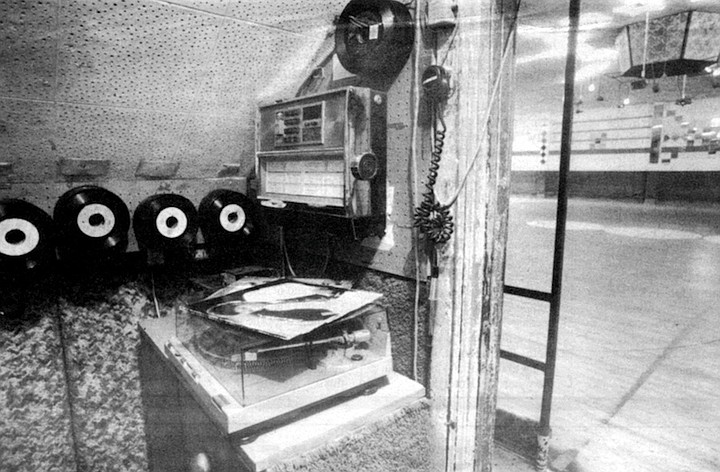
Until 1958 the music came from the Hammond. For the dance skating popular through the Fifties, strict tempo was so important, explains Wright, that rink organists used a metronome. “A good dance skater can tell you if your music is off two beats a minute,” says Wright. During the organ’s reign, “Rickety-Rickshaw Man” was the rink’s most requested tune. “It was the fastest,” Wright smiles, adding that until the Seventies no fast skating was permitted at his rink.
By Judith Moore, Sept. 5, 1985 | Read full article
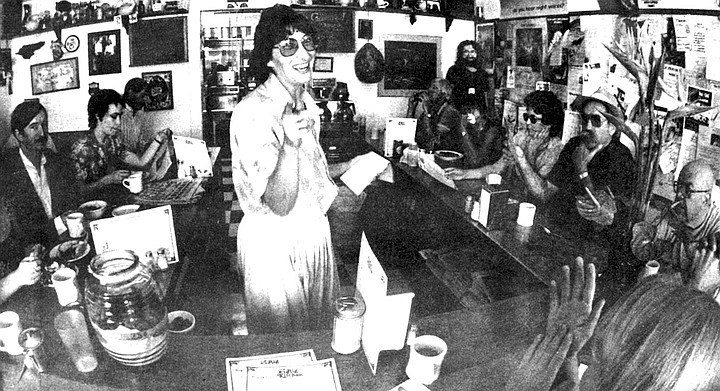
Inside the Big Kitchen, artists, rock musicians, actors, sailors, nuns, former Berkeley radicals, tattooed motorcycle lesbians, opera singers, symphony players. accountants, construction workers, and cops (“I make them park around the comer so my customers won’t feel intimidated,” Judy confides) mingle with journalists, teenagers, mystics, city council members, and the chronically unemployed. Artists sketch and trade their work for breakfast. Impromptu performers can always depend on a free meal.
By Sue Garson, May 8, 1986 | Read full article
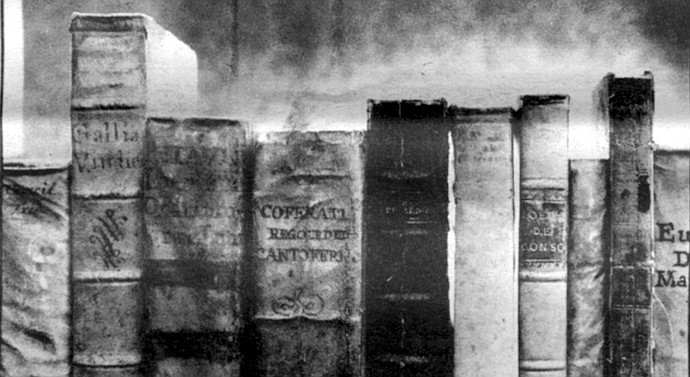
Valverde unburdens a perspiring white-haired man loaded from waist to double chin with titles about World War II. He says to Valverde, I'm just kinda reminiscing about my war.”
Waiting in line behind the purchaser of World War II books is a man with a silver flat-top haircut. In his carefully manicured hand, he grips The Opium War. Addressing no one in particular, he says. “Myself, I like the small, odd colonial war."
By Judith Moore, Oct. 19, 1989 | Read full article
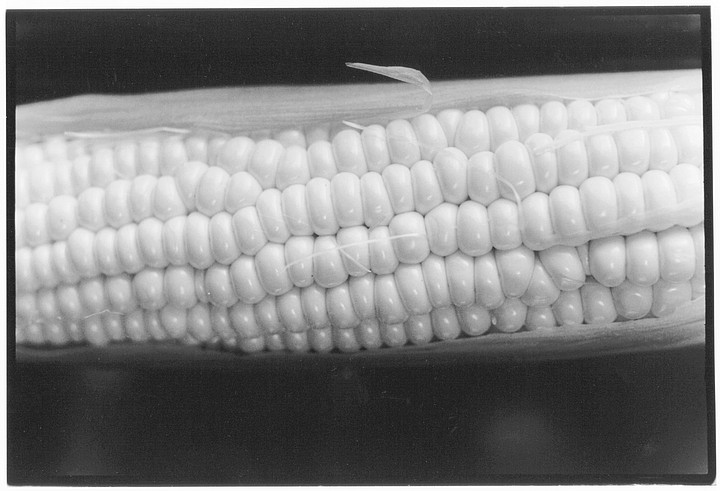
Chino said that all the Chinos’ new corn varieties are tested raw in the field in this manner. Ears also must be cooked to assess their aroma. For this step, the Chinos never boil the corn. “Sugar can pass through the membrane — the pericarp,” Chino said. “So if you boil it, the corn won’t be as sweet as if you cream it — cut it off the cob and cook it. Then the sugar is all there.”
By Jeannette De Wyze, July 9, 1998 | Read full article
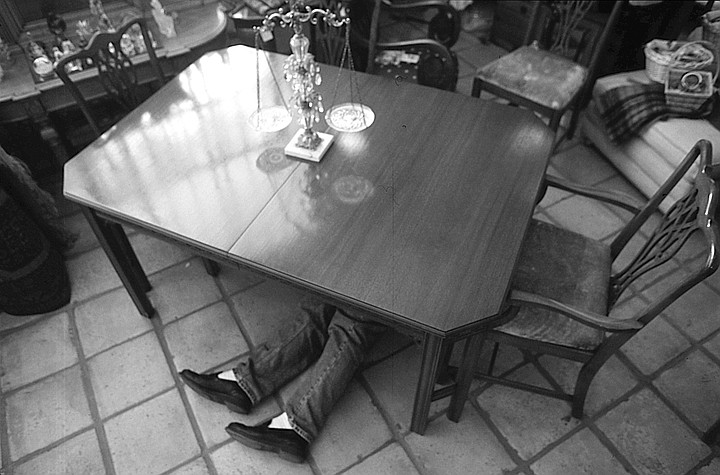
"The young are buying 'retro,'” says Cegelski. It dates mostly from the 1950s. “We also call it ‘mid-century.’ It’s less expensive than older pieces. You can buy a retro dining room set for $250 to $350.” Nostalgia drives some sales to the younger crowd. “They’re looking back at what Mom and Dad had and having memories of their grandparents. You walk into Ikea and say, ‘Particle board — it’s functional,’ but there’s no family behind it.”
By Jeanne Schinto, March 20, 2003 | Read full article
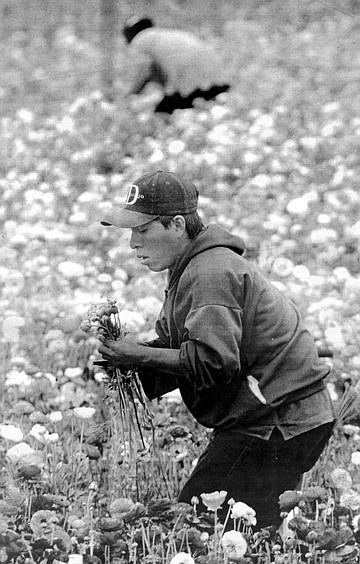
“The growth in acreage in San Diego County is in field production, not greenhouse production. Wax flowers, leptos, proteas, perennial outdoor shrubs. We have a climate that’s difficult to match. Theirs isn’t a niche of market, theirs is a niche of climate, where the Colombians can’t reproduce what we do here. We have this nice climate here that does well with the Australian and South African native plants. Not unlike the eucalyptus that grows so well here.”
By Linda Nevin, May 18, 2000 | Read full article
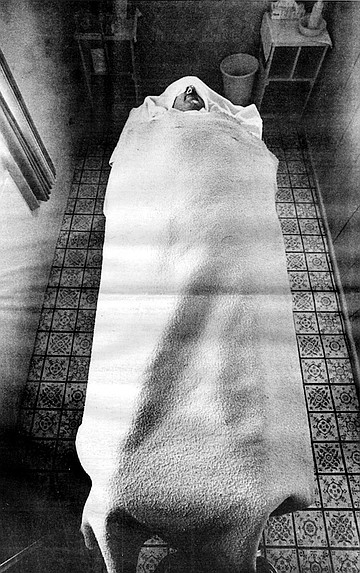
“There was this fella here, from Kansas or someplace. His wife dragged him out here. They didn’t know it was vegetarian till they got here. He used to go into town to eat every night, and he’d pick up a whole box of pastries at the bakery on his way back. He’d leave the box on the table in the dining hall just to tease all the fat women. You never saw anything disappear so fast.”
By Steve Sorensen, June 7, 1979 | Read full article


“The last real trouble he had was when bikers — predominately members of the Mongols, a particularly tough East County outfit — would frequent the hotel and often get into some pretty heavy, scary fights. For about a year, I guess from the middle of 1978 to the middle of ’79, we’d average a couple of fights a weekend. Then one day one of ’em just about snuffed another guy. That was all, and I eighty-sixed ’em.”
By Thomas K. Arnold, July 16, 1981 | Read full article

Fidel’s Norte opened with a bang in April of 1978. The Fidel’s name seemed magic. Mark and Richard were put in charge and Mark says their father opened the checkbook to them. They were making almost $700 a week, they bought a condominium overlooking the Del Mar racetrack, they both bought new cars — Mark a Porsche worth about $28,000. They also “started getting into new clothes — come to work in a new suit every day. We were in heaven.”
By Steven Shepherd, Oct. 1, 1981 | Read full article

Wilson poured drinks for himself and Bradshaw, then sat next to him on the customers’ side of the bar. The gun was on the bartop in front of Bradshaw. Their conversation started quietly, but then, according to Bradshaw, Wilson started tapping the bartop with his hands, uttering insults, and finally pounced for the gun. “He had been my friend,” Bradshaw told his probation officer eight months later.
By Joe Applegate, Sept. 2, 1982 | Read full article

Until 1958 the music came from the Hammond. For the dance skating popular through the Fifties, strict tempo was so important, explains Wright, that rink organists used a metronome. “A good dance skater can tell you if your music is off two beats a minute,” says Wright. During the organ’s reign, “Rickety-Rickshaw Man” was the rink’s most requested tune. “It was the fastest,” Wright smiles, adding that until the Seventies no fast skating was permitted at his rink.
By Judith Moore, Sept. 5, 1985 | Read full article

Inside the Big Kitchen, artists, rock musicians, actors, sailors, nuns, former Berkeley radicals, tattooed motorcycle lesbians, opera singers, symphony players. accountants, construction workers, and cops (“I make them park around the comer so my customers won’t feel intimidated,” Judy confides) mingle with journalists, teenagers, mystics, city council members, and the chronically unemployed. Artists sketch and trade their work for breakfast. Impromptu performers can always depend on a free meal.
By Sue Garson, May 8, 1986 | Read full article

Valverde unburdens a perspiring white-haired man loaded from waist to double chin with titles about World War II. He says to Valverde, I'm just kinda reminiscing about my war.”
Waiting in line behind the purchaser of World War II books is a man with a silver flat-top haircut. In his carefully manicured hand, he grips The Opium War. Addressing no one in particular, he says. “Myself, I like the small, odd colonial war."
By Judith Moore, Oct. 19, 1989 | Read full article

Chino said that all the Chinos’ new corn varieties are tested raw in the field in this manner. Ears also must be cooked to assess their aroma. For this step, the Chinos never boil the corn. “Sugar can pass through the membrane — the pericarp,” Chino said. “So if you boil it, the corn won’t be as sweet as if you cream it — cut it off the cob and cook it. Then the sugar is all there.”
By Jeannette De Wyze, July 9, 1998 | Read full article

"The young are buying 'retro,'” says Cegelski. It dates mostly from the 1950s. “We also call it ‘mid-century.’ It’s less expensive than older pieces. You can buy a retro dining room set for $250 to $350.” Nostalgia drives some sales to the younger crowd. “They’re looking back at what Mom and Dad had and having memories of their grandparents. You walk into Ikea and say, ‘Particle board — it’s functional,’ but there’s no family behind it.”
By Jeanne Schinto, March 20, 2003 | Read full article

“The growth in acreage in San Diego County is in field production, not greenhouse production. Wax flowers, leptos, proteas, perennial outdoor shrubs. We have a climate that’s difficult to match. Theirs isn’t a niche of market, theirs is a niche of climate, where the Colombians can’t reproduce what we do here. We have this nice climate here that does well with the Australian and South African native plants. Not unlike the eucalyptus that grows so well here.”
By Linda Nevin, May 18, 2000 | Read full article

“There was this fella here, from Kansas or someplace. His wife dragged him out here. They didn’t know it was vegetarian till they got here. He used to go into town to eat every night, and he’d pick up a whole box of pastries at the bakery on his way back. He’d leave the box on the table in the dining hall just to tease all the fat women. You never saw anything disappear so fast.”
By Steve Sorensen, June 7, 1979 | Read full article
Comments